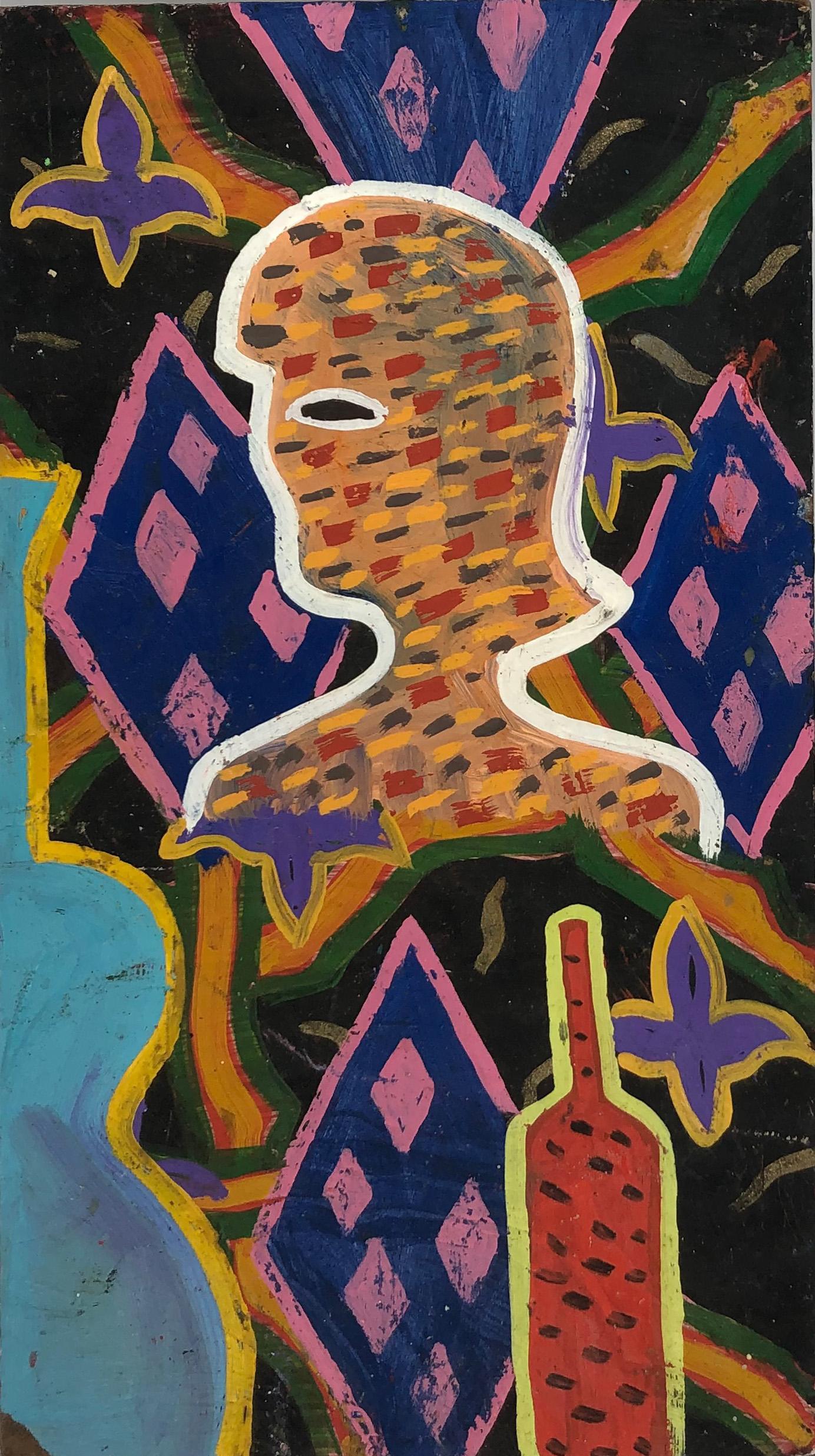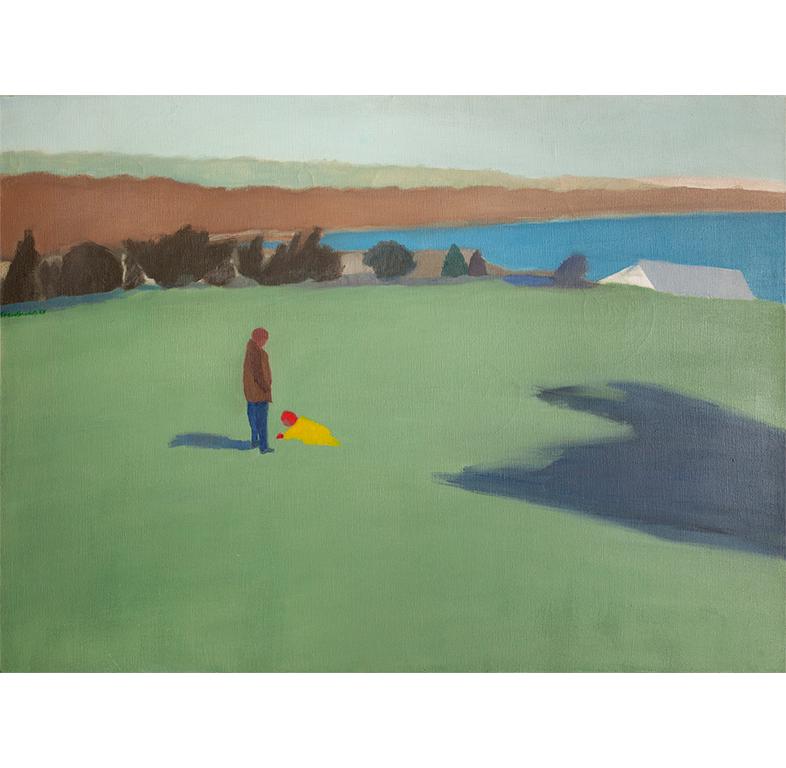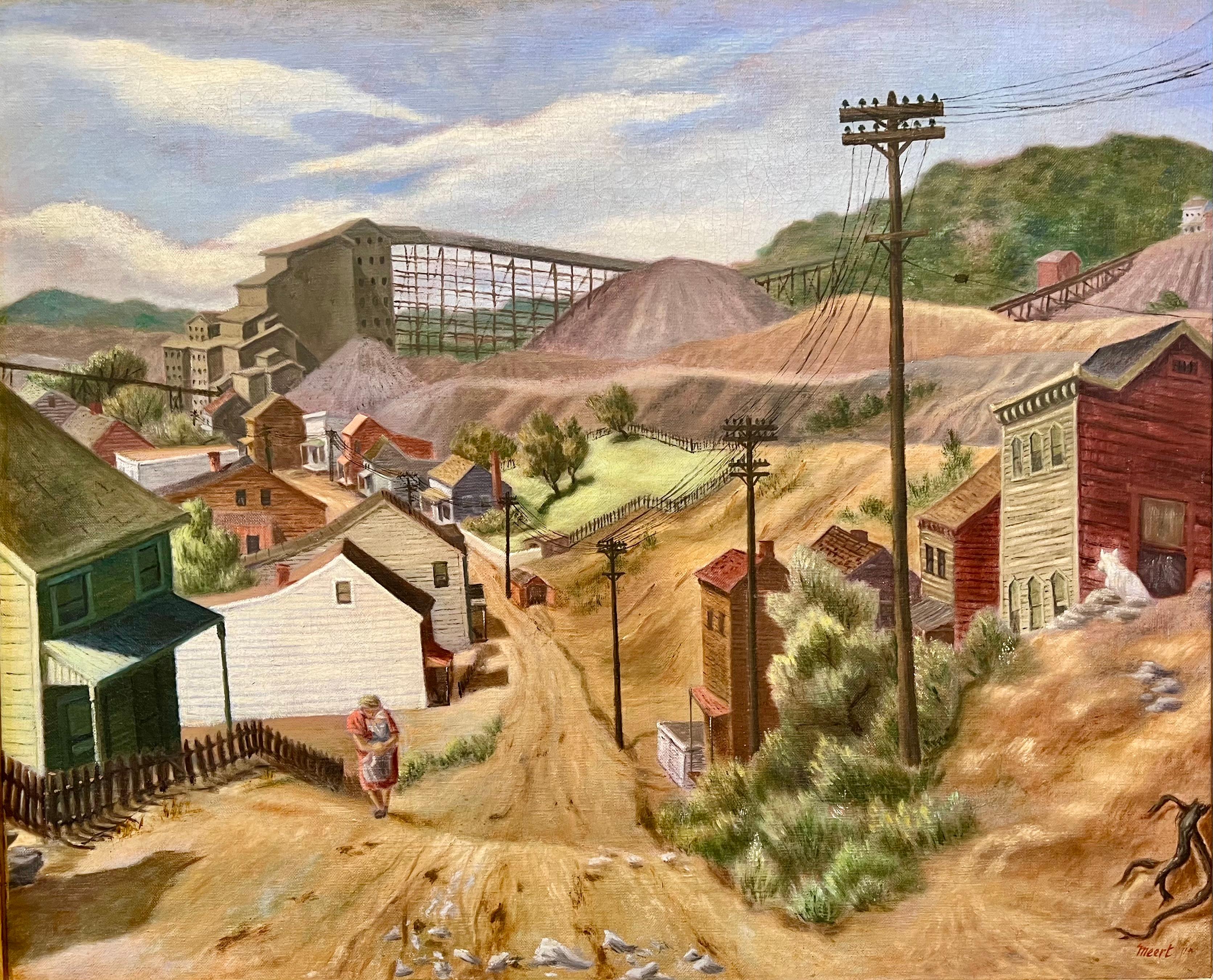Items Similar to Underwater Study 3284
Want more images or videos?
Request additional images or videos from the seller
1 of 5
Howard SchatzUnderwater Study 32842000
2000
About the Item
#1 of 8
archival pigment print
signed, numbered
Howard Schatz gave up a career as a retinal surgeon and a clinical professor to follow his passion for photography. Schatz first established a following in the 1990s with two collections of underwater photography, Water Dance and Pool Light. He has since gone on to photograph dancers, athletes, actors, the homeless, flowers, circus performers and design and execute his own compositions. His work often straddles the blurry line between fashion and art and makes the argument for fashion photography as art.
Schatz's focus is the human body--the graceful form of the dancer, the musculature of the athlete-but he also finds beauty in images we might find grotesque or disturbing. That is the hallmark of a great artist--to have us take a new look.
Schatz was awarded the 2015 IPA International Photography Award for Book of the Year for his retrospective, "Schatz Images: 25 Years." The IPA Awards, administered by the Lucie Foundation, are considered among the most prestigious in the field of photography.
His work recently showed at the Brooklyn Museum as part of its "Who Shot Sports" exhibition. His work has been shown in numerous museums, including the Whitney, the Guggenheim, San Francisco MOMA, the Met, MOMA, and that Art Institute of Chicago, and can be found in numerous private collections. Schatz has published 26 books of his work.
- Creator:Howard Schatz (1940, American)
- Creation Year:2000
- Dimensions:Height: 36.8 in (93.48 cm)Width: 40 in (101.6 cm)
- Medium:
- Movement & Style:
- Period:
- Framing:Framing Options Available
- Condition:
- Gallery Location:Lawrence, NY
- Reference Number:1stDibs: LU149728058142
About the Seller
5.0
Vetted Seller
These experienced sellers undergo a comprehensive evaluation by our team of in-house experts.
Established in 2011
1stDibs seller since 2021
22 sales on 1stDibs
Typical response time: 3 hours
- ShippingRetrieving quote...Ships From: Lawrence, NY
- Return PolicyA return for this item may be initiated within 3 days of delivery.
More From This SellerView All
- Underwater Study 3288By Howard SchatzLocated in Lawrence, NY#1 of 8 Howard Schatz gave up a career as a retinal surgeon and a clinical professor to follow his passion for photography. Schatz first established a following in the 1990s with two...Category
2010s American Modern Figurative Paintings
MaterialsArchival Pigment
- Brooklyn BridgeBy Joe NovakLocated in Lawrence, NYThe Brooklyn Bridge has been an iconic subject of artists for generation. This is contemporary artist Joe Novak's take referencing the early modernist ...Category
2010s American Modern Figurative Paintings
MaterialsMixed Media
- Untitled Maine Beach SceneLocated in Lawrence, NYElaine de Kooning said of De Hirsh Margules that he was "[w]idely recognized as one of the most gifted and erudite watercolorists in the country", and New York Times critic Howard Devree stated in 1938 that "Margules uses color in a breath-taking manner. A keen observer, he eliminates scrupulously without distortion of his material." Devree later called Margules "one of our most daring experimentalists in the medium." In 1929, Margules attended an exhibition of John Marin’s paintings. While at the exhibition, he "launched into an eloquent explanation of Marin to two nearby women", and was overheard by an impressed Alfred Stieglitz. The famous photographer and art promoter invited Margules to dine with his wife, the artist Georgia O’Keeffe, and his assistant, painter Emil Zoler. Stieglitz thereafter became a friend and mentor to Margules, becoming for him "what Socrates was to his friends." Stieglitz introduced Margules to John Marin, who quickly became the most important painterly influence upon Margules. Elaine de Kooning later noted that Margules was "[i]ndebted to Marin and through Marin to Cezanne for his initial conceptual approach." His work can be found in the collections of the Whitney, MOMA, Boston Museum of Fine Art, the Brooklyn Museum and the Provincetown Art...Category
1940s Modern Figurative Paintings
MaterialsGouache
- Seated WomanBy Rolph ScarlettLocated in Lawrence, NYNever afraid of trying new styles, curious and opinionated, constantly engaged with the world around him, Rolph Scarlett more than once proved to be at the artistic zeitgeist in a ca...Category
1930s Cubist Figurative Paintings
MaterialsOil Pastel
- UntitledBy Harriette JoffeLocated in Lawrence, NYJoffe's career spans the post-World War II Abstract Expressionist movement to the present. She is known for her powerful images of women and horses, often intertwined, and representi...Category
1980s Abstract Expressionist Abstract Paintings
MaterialsOil
- Stop the World, I Want OnBy Harriette JoffeLocated in Lawrence, NYSigned, titled and dated en verso Joffe's career spans the post-World War II Abstract Expressionist movement to the present. She is known for her powerful images of women and horses...Category
1980s Expressionist Figurative Paintings
MaterialsAcrylic
You May Also Like
- Acadian Girl with DiamondsBy FPA Francis Pavy ArtistLocated in Lafayette, LAthe medium for this small painting is oil on Masonite. The painting shows a silhouette of a woman surrounded by diamonds fleur-de-lis's, a guitar and a bottle. on the reverse it reads: ACADIAN GIRL WITH DIAMONDS, © FRANCIS X PAVY...Category
Early 2000s American Modern Figurative Paintings
MaterialsOil
- 2 Girl StudyBy FPA Francis Pavy ArtistLocated in Lafayette, LAThis small word depicts two women with different hairstyles. The heads of the women are painted black with a yellow outline and blue spots in the interior. The background has red triangles with white centers and a block in the middle. The background is gold with green stripes around the triangles. On the reverse it reads:© Francis Pavy 2002, all rights reserved, #16102, 2 girl...Category
Early 2000s American Modern Figurative Paintings
MaterialsOil
- Southdown Field at Long Island Sound Beach Parent and childBy Stan BrodskyLocated in Brookville, NYThis large green field overlooking the Long Island Sound Beach depicts a parent without definition, mother or father, observing their child in the gr...Category
1960s American Modern Figurative Paintings
MaterialsOil
- Six O'ClockLocated in Los Angeles, CASix O-Clock, c. 1942, oil on canvas, 30 x 20 inches, signed and titled several times verso of frame and stretcher (perhaps by another hand), marked “Rehn” several times on frame (for the Frank K. M. Rehn Galleries in New York City, who represented Craig at the time); Exhibited: 1) 18th Biennial Exhibition of Contemporary American Oil Paintings from March 21 to May 2, 1943 at The Corcoran Gallery of Art in Washington, D.C. #87, original price $450 (per catalog) (exhibition label verso), 2) Craig’s one-man show at the Frank K. M. Rehn Galleries, New York City, from October 26 to November 14, 1942, #10 (original price listed as $350); and 3) Exhibition of thirty paintings sponsored by the Harrisburg Art Association at the State Museum of Pennsylvania in Harrisburg in March, 1944 (concerning this exhibit, Penelope Redd of The Evening News (Harrisburg, Pennsylvania) wrote: “Other paintings that have overtones of superrealism inherent in the subjects include Tom Craig’s California nocturne, ‘Six O’Clock,’ two figures moving through the twilight . . . .” March 6, 1944, p. 13); another label verso from The Museum of Art of Toledo (Ohio): original frame: Provenance includes George Stern Gallery, Los Angeles, CA About the Painting Long before Chris Burden’s iconic installation outside of the Los Angeles County Museum of Art, Urban Light, another artist, Tom Craig, made Southern California streetlights the subject of one of his early 1940s paintings. Consisting of dozens of recycled streetlights from the 1920s and 1930s forming a classical colonnade at the museum’s entrance, Burden’s Urban Light has become a symbol of Los Angeles. For Burden, the streetlights represent what constitutes an advanced society, something “safe after dark and beautiful to behold.” It seems that Craig is playing on the same theme in Six O-Clock. Although we see two hunched figures trudging along the sidewalk at the end of a long day, the real stars of this painting are the streetlights which brighten the twilight and silhouette another iconic symbol of Los Angeles, the palm trees in the distance. Mountains in the background and the distant view of a suburban neighborhood join the streetlights and palm trees as classic subject matter for a California Scene painting, but Craig gives us a twist by depicting the scene not as a sun-drenched natural expanse. Rather, Craig uses thin layers of oil paint, mimicking the watercolor technique for which he is most famous, to show us the twinkling beauty of manmade light and the safety it affords. Although Southern California is a land of natural wonders, the interventions of humanity are already everywhere in Los Angeles and as one critic noted, the resulting painting has an air of “superrealism.” About the Artist Thomas Theodore Craig was a well-known fixture in the Southern California art scene. He was born in Upland California. Craig graduated with a degree in botany from Pomona College and studied painting at Pamona and the Chouinard Art School with Stanton MacDonald-Wright and Barse Miller among others. He became close friends with fellow artist Milford Zornes...Category
1940s American Modern Landscape Paintings
MaterialsCanvas, Oil
- Gold Mine, Central City, ColoradoBy Joseph MeertLocated in Los Angeles, CAThis painting is part of our exhibition America Coast to Coast: Artists of the 1930s Goldmine, Central City, Colorado, oil on canvas, 36 x 28 inches, c. 1936, signed lower right, ex collection of Platt Fine Art, Chicago, Illinois (label verso). About the Painting Joseph Meert’s painting, Goldmine, Central City, Colorado, depicts the short-lived resurrection of a once prominent city just outside Denver. Central City was founded in 1859 soon after John Gregory struck gold in the area. As word spread, thousands of miners converged into “Gregory’s Gulch” and its surroundings became known as the “richest square mile on earth.” Mining production quickly increased resulting in Central City to becoming Colorado’s largest city in the early 1860s. Despite some technical difficulties transitioning to lode mining and the rise of competition from Leadville, Central City remained an economic boom town through the turn of the century. But, with every boom, there is a bust. World War I marked the end of Central City’s prominence as ore production ground to a halt and by 1925, the town’s population shrank to only 400 people. The desperation of the Great Depression and a nearly 100% increase in the price of gold lured labor and capital back to Central City. Meert painted in Colorado during the mid-1930s, a time when he created his most desirable works. It is during this period of renaissance that Meert captures one of Central City's outlying dirt streets bordered by 19th century wooden houses from the town's heyday and the more recently installed electric lines leading to a distant gold mine. A lone figure trudges up the hill, a mother with a baby in her arms, putting us in mind of the rebirth of the town itself. Meert had solo exhibitions at the Colorado Springs Fine Arts Center in 1936 and the Denver Art Museum. Although it is not known whether Goldmine, Central City was included in either of these exhibitions, it seems likely. Moreover, the painting is closely related to Meert’s painting, The Old Road, which was painted in 1936 and exhibited at the Corcoran Gallery of Art in Washington, DC and at the Dallas Museum of Art. About the Artist Joseph Meert was a well-regarded painter and muralist, who initially made a name for himself in the American Scene and later as an abstract expressionist. Although initially successful, Meert struggled financially and with mental illness later in life. He was born in Brussels, Belgium, but moved with his family to Kansas City, Missouri. As a child, a chance encounter at the Union Pacific Railyard changed his life. Meert happened upon a worker repainting and stenciling a design on a railroad car. Meert later recalled that this experience introduced him to the idea of being a painter. Without support from his father, Meert obtained a working scholarship to the Kansas City Art Institute. After four years at the Kansas City Art Institute, Meert studied seven years at the Art Students League and in Europe and Los Angeles. At the Art Students League, Meert fell under the spell of Thomas Hart Benton and Stanton MacDonald-Wright. In 1931, he befriended Jackson Pollock. By 1934, Meert was part of the Public Works of Art Project when he met his wife, Margaret Mullin...Category
1930s American Modern Landscape Paintings
MaterialsCanvas, Oil
- Fallen Comrades/InterludeLocated in Los Angeles, CAThis work is part of our exhibition - America Coast to Coast: Artists of the 1940s Fallen Comrades/Interlude, 1949, oil on masonite, signed lower left, 35 x 56 inches; Gallery Z la...Category
1940s American Modern Paintings
MaterialsMasonite, Oil





